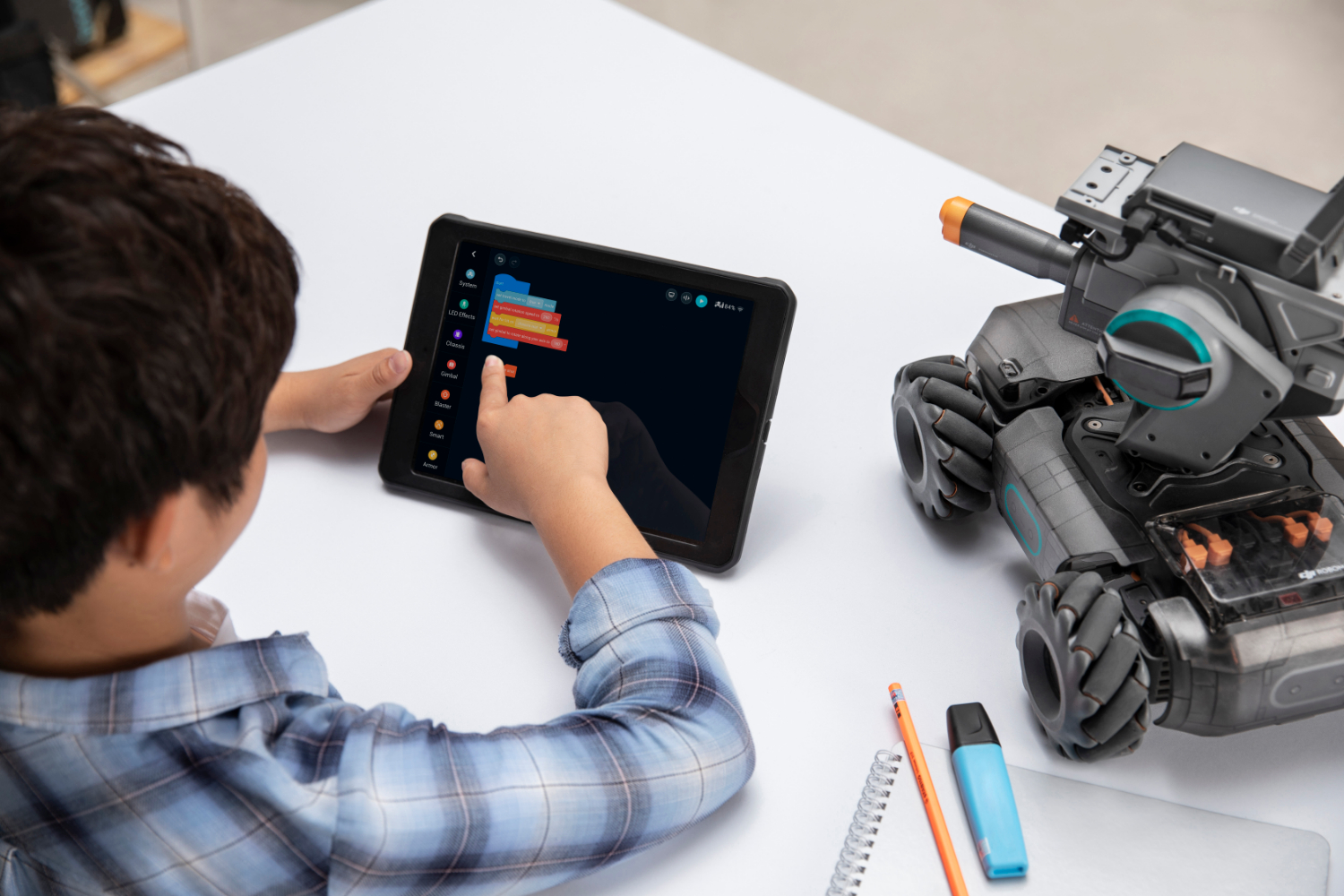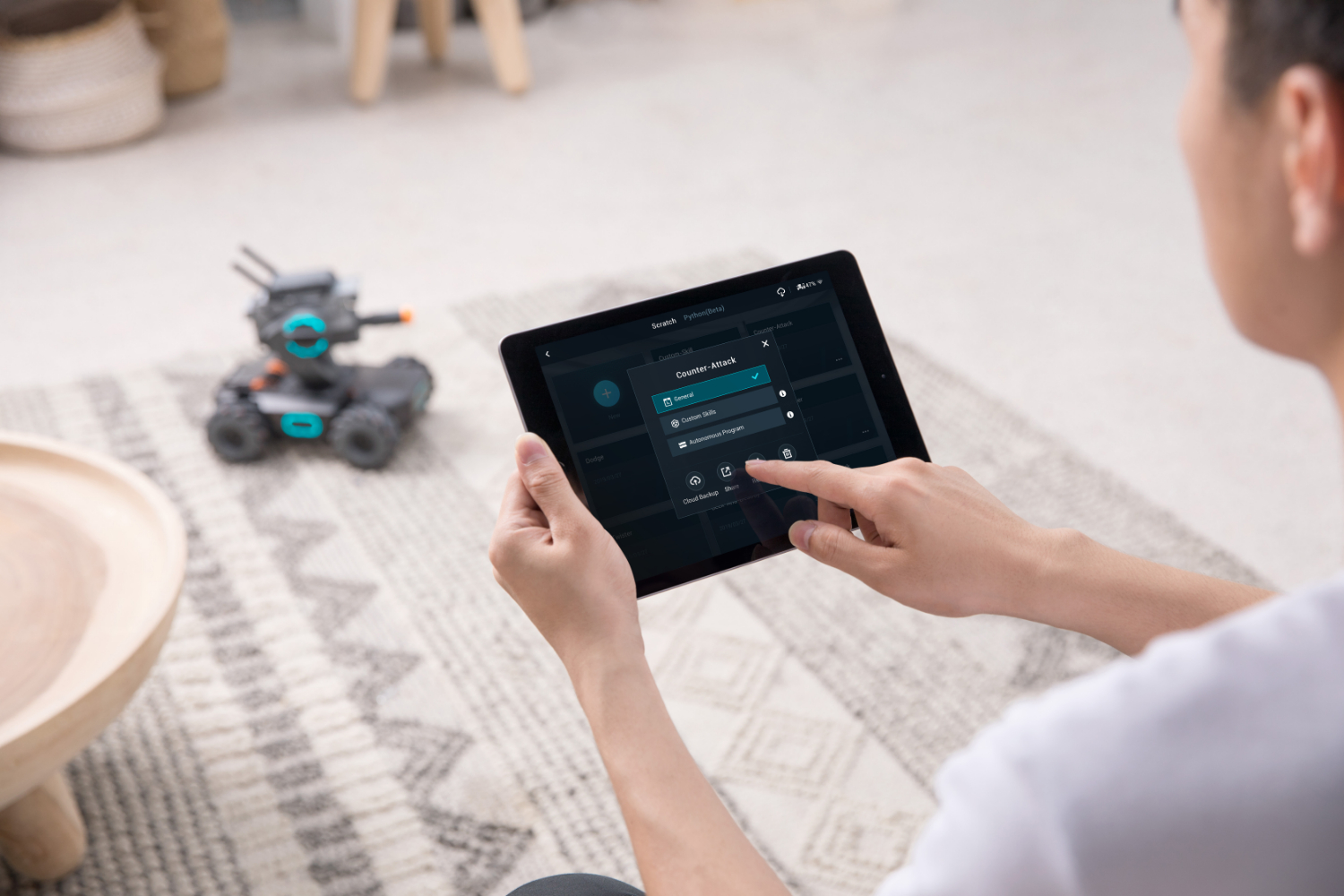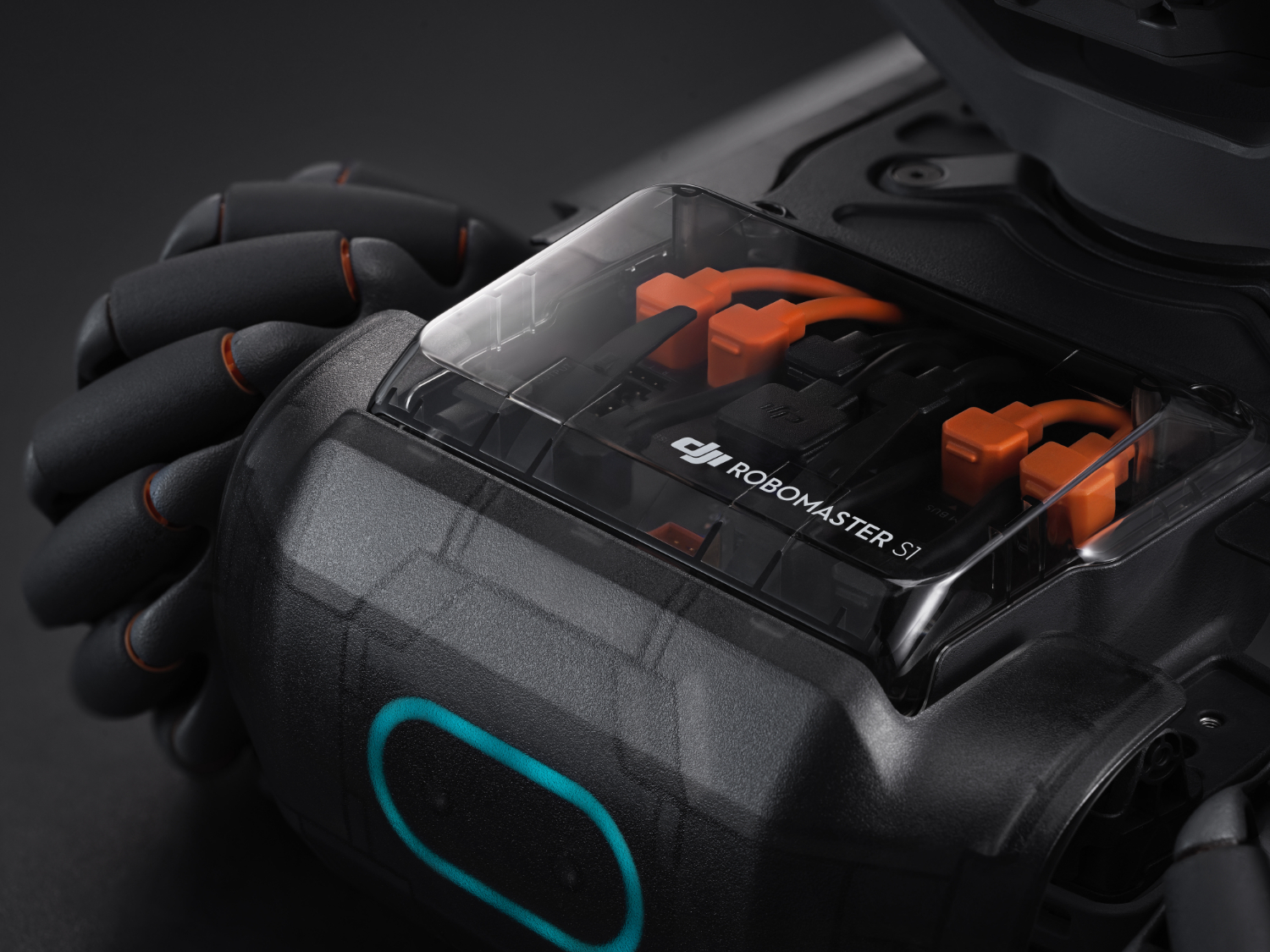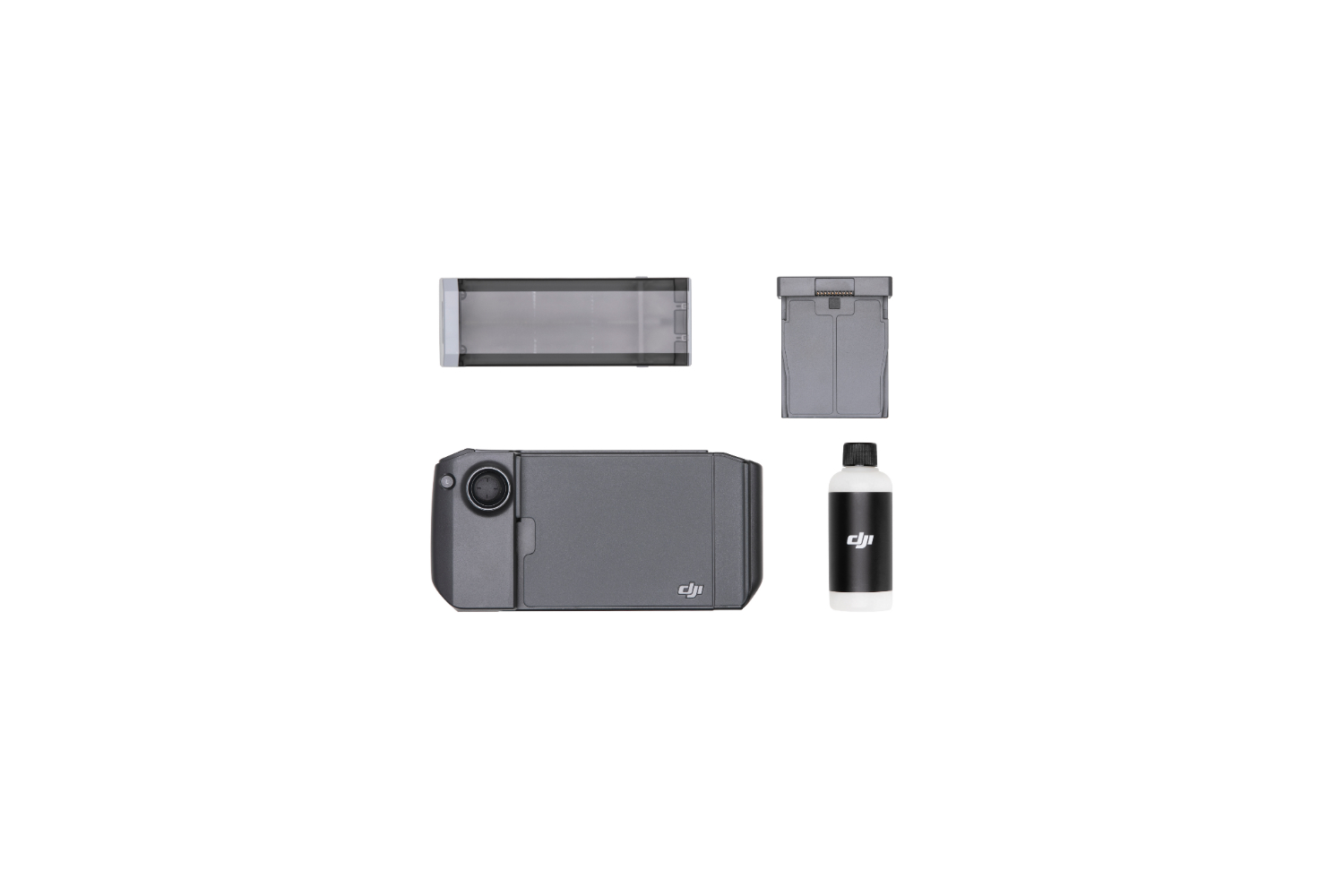Drone Maker DJI Soars Into STEM Robots With RoboMaster S1
DJI, best known for its high-flying drones, is taking a more terrestrial approach with its latest product, an educational robot named RoboMaster S1. Available starting today for $499, the S1 offers kids and adults interested in learning Python ways to code and play solo or with others.
Scratch and Python Coding
S1 (which stands for Step 1), comes with a companion RoboMaster app (for iOS and Android), where you can program six different types of basic functions in Scratch 3.0 block-coding or the more advanced Python language:
- Line Follow: Use the RoboMaster app to create a path for the S1 to follow
- Vision Marker Recognition: The S1 can read 44 different “Vision Markers,” which consist of letters, special characters and numbers. You can program the S1 to conduct a different function upon scanning a marker.
- Follow Mode: The S1 can detect a person in its field of view (FOV) and follow it around.
- Clap Recognition: Make the S1 do different things based on how many times you clap.
- Gesture Recognition: Control S1 with different hand gestures. Some of DJI’s drones already have this feature, allowing users to make the device follow them with a wave, for example.
- S1 Recognition: Program S1 to do various movements when it sees another S1 robot.
There are also more advanced coding possibilities for skilled programmers. This includes making S1 run better by tweaking its wheels’ torque, or coding your own moves, like a counterattack, for robot fights.
To help guide coding students on the right path, RoboMaster's app has a “Road to Mastery” project-based series of coding tutorials. The app also has a “RoboAcademy,” stocked with video tutorials and programming guides. DJI says it will update both regularly.
DJI claims the S1 has a good amount of processing power, partially thanks to its industrial-grade CAN-bus cable (for letting microcontrollers communicate) enabling high bandwidth and stability even during multi-tasking.
Battle Robot
Like all fun robots, the S1 has a violent side. It’s equipped with 31 sensors, including six on its body that let it know when it’s been hit in combat. And in a Nerf-like turn of events, S1 has a non-toxic trick up its sleeve: a gel bead-slinging infrared gimbal. The beads are made of a “composite material” that you’re supposed to submerge in water to soften before using it as ammo. For further safety, the blaster can only shoot at a 10-degree or smaller angle. Still, the S1 comes with safety goggles.
“Every robot has a speedometer built in its blaster to measure the speed of when a gel bead is launched and a gel bead will not launch if its previous launching speed is higher than the maximum speed (26mps),” a DJI spokesperson told us. “The blaster was specifically designed... If those objects were to be launched through the blaster, their launching speed will be too low to cause any injuries.”
Get Tom's Hardware's best news and in-depth reviews, straight to your inbox.
With its first-person view (FPV) object recognition camera, you can see from the S1’s point of view in real-time from your device. It also has six pulse width modulation (PWM) control ports so skilled enthusiasts can add third-party hardware and communicate with other S1s.
The S1 moves via four Mecanum wheels, the same kind of omnidirectional wheels used in industrial containers and forklifts, with a dozen rollers each.
DJI says it will also make a kit including a controller, extra gel beads and a container for the beads next month.
DJI Flies Deeper Into Robotics
While DJI’s reputation is firmly grounded in its flying machines, it has been dabbling in robotics since it launched the RoboMaster competitions, robot fighting tournaments for college students, in 2013. In August, DJI will host an S1-themed version in Shenzhen, China.
However, with a steep price tag, the S1 will have a steep hill to climb. At $499, it’s much pricier than other competing robots, like the JavaScript-teaching Sphero Bolt ($145 at time of writing) and GJS Geio ($200), which also has a FPV camera and various game modes.
With the well-known DJI branding behind it, we’ll be interested to see if the S1’s Road to Mastery will be enough to keep users, especially children, engaged long-term and if it can deliver an app, games and build quality worthy of the price. If so, it may have some advantage over its lower-priced STEM competitors.
Photo Credits: DJI

Scharon Harding has over a decade of experience reporting on technology with a special affinity for gaming peripherals (especially monitors), laptops, and virtual reality. Previously, she covered business technology, including hardware, software, cyber security, cloud, and other IT happenings, at Channelnomics, with bylines at CRN UK.
-
vern72 I dunno about the firing beads part but everything else sounds great! It'll keep the kid occupied for years!Reply




